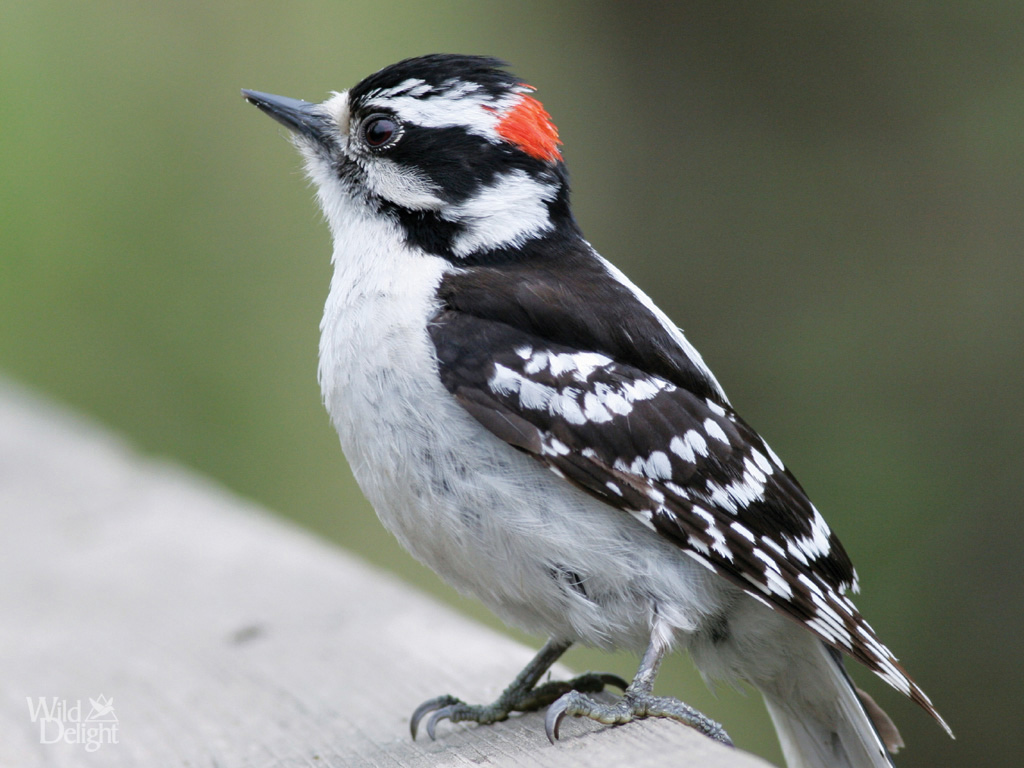Audubon Blog: The Downy Woodpecker
Contributed by Bill Hamilton
A common visitor to our bird feeders (especially if those feeders are full of black oil sunflower seeds!) is the Downy Woodpecker. Downies come into our feeders in the summer to augment their primary diet of insects and also in the winter when the sunflower seeds represent a much more significant percentage of the daily food supply.
Male and female Downy Woodpeckers are similar in size (5 or 6 inches long) and plumage (black and white checkered backs and white breasts). Males, though, have a prominent red patch on the backs of their heads.
These active birds are found in a wide variety of forested habitats but prefer deciduous forests and especially like to feed on and dig their nesting holes into elms and birches that have been weakened by fungal diseases or age. Feeding on softened trees saves the Downy Woodpecker a great deal of energy when it drills into the bark and heart wood searching for insects. Chemical cues from the afflicted tree along with visual recognition of scars, holes, missing bark and odd trunk curvatures attract these woodpeckers to these more easily excavated (and often more insect rich!) trees.
In addition to insects and sunflower seeds, Downy Woodpeckers also avidly feed on a wide variety of small fruit including poison ivy berries. Downies are an important agent in this noxious plant’s extensive occurrence and rapid spread.
In the summer most of the insects eaten by the downy woodpecker are on the surface of the tree bark, and the foraging downy simply utilizes its long, sticky tongue to snatch them up. In cooler weather, or when surface insects are not abundant, a downy will typically work its way up a tree by a combination of short jumps and fluttering flights going first to any visual deformities on the bark. The downy pecks at the bark in an attempt to stimulate subsurface insects to move about. The downy then uses its excellent sense of hearing to locate these moving insects and rapidly drills a circular hole in the bark to capture them.
Female Downy Woodpeckers tend to forage on the lower, larger branches and trunks of trees while the males tend to forage higher in the canopy on the smaller branches and more slender sections of the trunk. These gender foraging preferences reduces potential intraspecific competition for food and expands the species’ potential food base.
In the winter Downy Woodpecker join with a variety of small song birds (including Black-capped Chickadees, Tufted Titmice, White-breasted Nuthatches, Kinglets, and Brown Creepers) to form mixed flocks. These flocks may seem at first glance to be detrimental to the survival of these birds (all food sources found by members of the flock are shared among all of the individuals) but the increased percentage of food sources found and the increased protection against and awareness of predators makes these associations quite beneficial to all individuals. Interestingly, female Downy Woodpeckers have been observed to continue to be members of somewhat smaller mixed flocks throughout the year. Males, though, only participate in these flocks in the winter.
